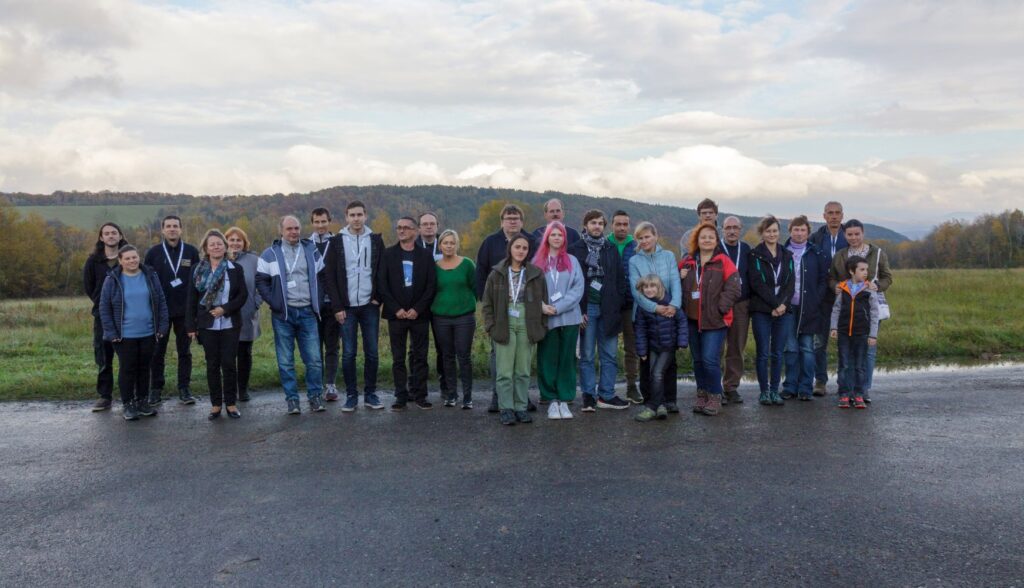On the days of October 26th to October 28th, 2023, the Vihorlat Observatory in Humenné organized a traditional conference called “Kolos.” The co-organizers were the Slovak Astronomical Society, the Slovak Union of Astronomers, the Faculty of Science of the Pavol Jozef Šafárik University in Košice, and the Slovak Central Observatory. It took place as part of the project solution APVV-20-0148 “From Interacting Binaries to Exoplanets.” The event was marked by a rich autumn in astronomy in Slovakia. Especially astronomers who had participated in a large conference on the use of small telescopes in the Tatra Mountains in September did not find a reason to travel to another conference of similar focus. However, some still came. Kolos essentially became a meeting of institutions involved in the mentioned APVV grant project. These institutions included the Astronomical Institute of the Slovak Academy of Sciences (AsÚ SAV), the Faculty of Science of the Pavol Jozef Šafárik University in Košice (PF UPJŠ), and the Vihorlatská Observatory in Humenné (VH). The event also featured several personalities from Poland and amateur astronomers. In total, 25 astronomers attended the conference. From a national perspective, Slovakia, Poland, Ukraine, and Russia were represented. There were 12 oral scientific presentations and 4 poster presentations. The program took place at the Astronomical Observatory on Kolonica Saddle and in the premises of the Armales Hotel in Stakčín.
At the beginning of the conference, the new director of the Vihorlat Observatory in Humenné, Mrs. Mária Kulanová, addressed the participants. This was followed by the traditional report on what had happened at the Astronomical Observatory on Kolonica Saddle over the past year. The report usually had two parts: one related to infrastructure changes and activities in education and astrotourism, and the other to the results of research activities. The former report was typically presented by the former director, Igor Kudzej. However, for the first time in history, he was not present at Kolos. Therefore, both reports were delivered by Pavol A. Dubovský. He called them “sky news” and “ground news.” The reports were comprehensive, and the “ground” part took place partly in the field. Participants were able to see the new developments in the observatory area in person. The most significant change so far is the concrete foundations of two new observation pavilions.
On the first day of the conference, there were brief poster presentations. Then, participants divided into two groups. While the latest educational programs used in public outreach were presented in the planetarium, a meeting of the grant project APVV-20-0148 investigators took place in the main building of the observatory.

The second day of the conference continued with the scientific program divided into two sections. The morning session mainly focused on the research of variable stars. Theodor Pribulla (AsÚ SAV) started with a comprehensive lecture on the spectroscopy of eclipsing binary stars. This was followed by Pavol A. Dubovský, who presented the latest observations of Nova Herculis 2021. Karolina Jarosik from Jagiellonian University in Krakow analyzed light curves of hot subdwarfs in binary systems. There were also contributions that analyzed individual stars. Sergei Shugarov analyzed observations of a cataclysmic variable star of the WZ Sge type, Vlada Marsakova presented the symbiotic nova PU Vul and RT Ser.
Interesting presentations continued in the afternoon. Dmytro Orikhovskiy (AsÚ SAV) studied transits of exoplanets orbiting rapidly rotating hot stars characterized by significant gravitational darkening. This allowed him to study the precession of inclined orbits of exoplanets by observing the asymmetry of transits. A challenging test for the mathematical knowledge of the audience was the presentation by Albert Kotvytský (PF UPJŠ). His algebraic method, however, offers a useful application for the analysis of gravitational lenses. Two presentations were focused on the use of artificial intelligence. Štefan Parimucha (PF UPJŠ) discussed the use of deep learning for the mass classification of light curves of eclipsing binaries. Given the massive influx of newly discovered objects by automated surveys, this is a very relevant topic. Robert Barsa summarized the use of AI in astrophotography. A different perspective was provided by Matej Ziga from the company Astrossolutions. He introduced a network of small telescopes primarily used for space safety tasks. One of the “sensors” of the network operates at the Astronomical Observatory on Kolonica Saddle. The last presentation by Yuliana Kuznetsova presented educational activities in Ukraine related to an interesting location – the old impact crater Ilyinets.
After a fairly demanding program, participants enjoyed an evening of relaxation, enriched by Robert Barsa’s time-lapse videos of the aurora borealis obtained during a recent trip to Norway.
All presentations are publicly accessible on the conference website kolos.astrokolonica.sk as the links in the conference program.”
